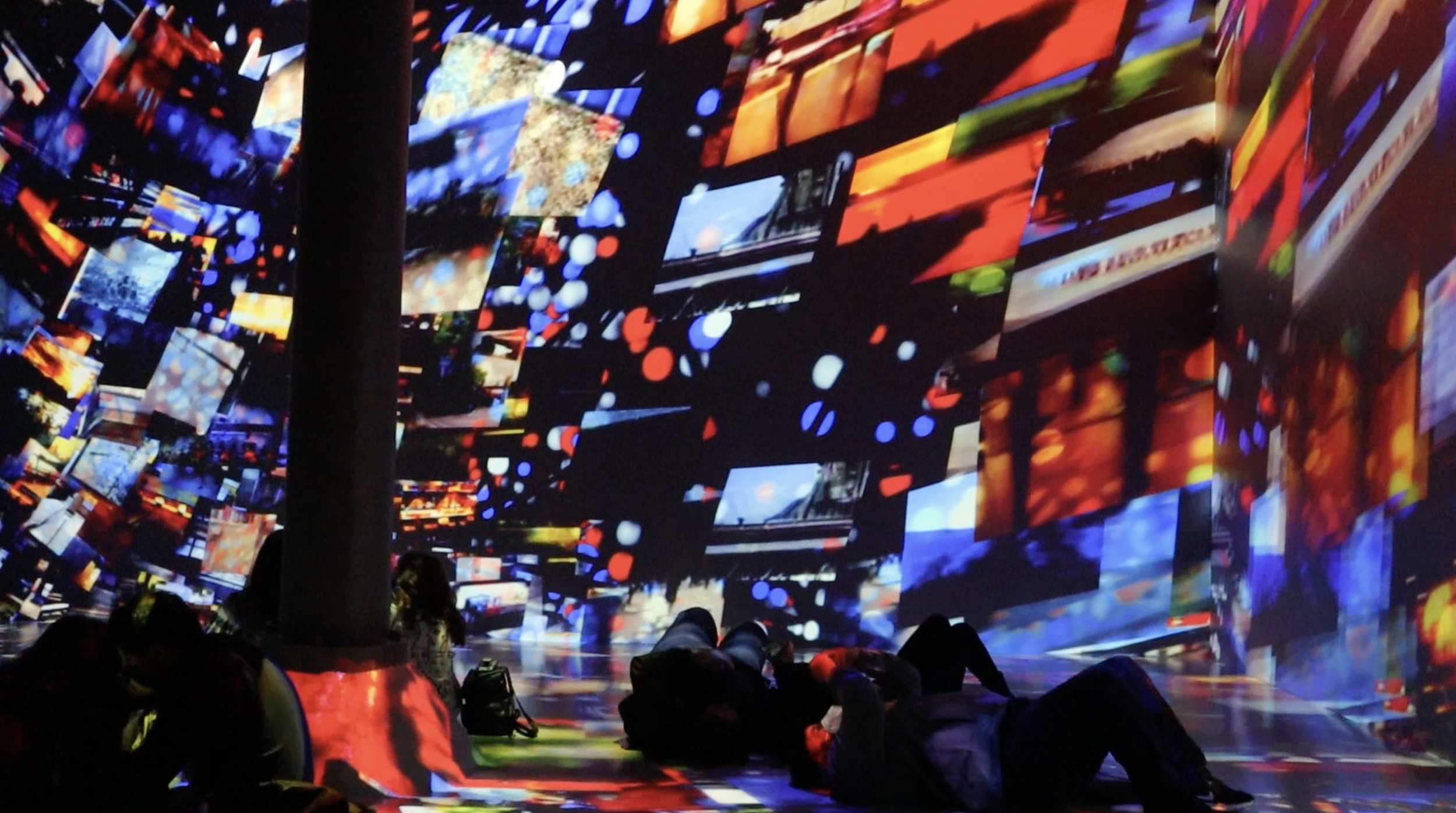Immersive Art Experiences: Spectacular or Money-Grab?
Beyond Van Gogh: The Immersive Experience (Paquin Entertainment Group) (Paquin Entertainment Group)
As you step into Van Gogh: The Immersive Experience, the noise of the busy streets fades away, replaced by a gentle, enchanting music that seems to come from all around you. Suddenly, you’re surrounded by swirling colors and vivid brushstrokes, as if you've been transported right inside Van Gogh’s paintings. Starry Night stretches out above you, the stars glowing with a magical light. As you wander through fields of Sunflowers and stroll along the charming streets of Café Terrace at Night, you feel a special connection to Van Gogh’s incredible work. Each projection brings his art to life in a way that’s both breathtaking and deeply personal. This isn’t just an exhibition—it’s an unforgettable adventure into the heart of Van Gogh’s world.
In recent years, the art world has witnessed a significant shift with the rise of immersive art experiences, which refer to creative works that engage multiple senses, allowing viewers to become fully absorbed in the art. These experiences often involve interactive elements, virtual reality, and elaborate installations that transform the audience from passive observers into active participants.
Unlike traditional galleries where art is viewed from a distance, immersive art experiences envelop visitors in multi-sensory environments, allowing them to engage with the artwork on a profoundly personal level. These experiences offer a dynamic blend of art, technology, and interaction, transforming passive observation into active participation.
But as these experiences gain popularity, questions arise: Are they a genuine celebration of artistic expression, or merely a commercial venture exploiting the work of artists?
Immersive Experiences featuring Banksy’s art raises ethical concerns (Photo credit: Erald Kraja)
What is an Immersive Art Experience?
An immersive art experience is an exhibition or installation designed to engage the viewer's senses and emotions in a comprehensive, often interactive, manner. Utilizing technologies such as virtual reality (VR), augmented reality (AR), projection mapping, and interactive installations, these experiences create environments that blur the line between the viewer and the artwork. Participants don't just look at art; they move through it, interact with it, and sometimes even become part of it.
These experiences are often operated by artist studios, art collectives, and production companies, bringing sophisticated new-media installations to public. The goal is to create a sense of presence and emotional connection, often by enveloping viewers in a constructed environment that stimulates sight, sound, touch, and sometimes even smell.
The core essence of immersive art experiences is their ability to break down traditional barriers between art and audience, creating a shared, often transformative, experience that challenges and expands our understanding of art and its possibilities.
Arcadia Earth: An immersive exhibition to raise awareness about climate change
Immersive Experiences’ Massive Popularity
Immersive art experiences have gained massive popularity, with exhibitions featuring iconic painters like Vincent van Gogh or famous contemporary artists like Refik Anadol; promising to take visitors on a “trip without chemicals,” or raise awareness about climate change.
There’s a few reasons for the virality of these exhibitions:
Social Media Buzz: The visually stunning and interactive nature of these experiences makes them highly shareable on Instagram and TikTok. Photos and videos of people walking through Starry Night or interacting with Banksy's satirical pieces create a buzz that draws more visitors.
Accessibility: These exhibitions often travel to multiple cities, making them more accessible than static museum collections. This mobility allows a wider audience to experience art in a novel way, and share the experience with people all around the world.
Emotional Connection: No matter how you feel about the ethics of immersive experiences, you have to admit that stepping inside Van Gogh's masterpieces through large-scale projections and digital recreations is awe-inspiring. Immersive experiences can evoke strong emotional responses, making art feel more personal and engaging. This deeper connection can inspire repeat visits and word-of-mouth recommendations.
And when one show goes viral, several more emerges: Frida: Immersive Dream, Gaudí: the Architect of the Imaginary, Immersive Klimt Revolution, Beyond Monet, Monet by the Water, Chagall: Midsummer Night’s Dreams, Imagine Picasso: The Immersive Exhibition, Dalí: The Endless Enigma… The list goes on.
Machine Hallucination: NYC by Refik Anadol at ARTECHOUSE
The Controversy: Artists, Compensation, and Exploitation
Despite their popularity, a significant controversy surrounds immersive art experiences: the exorbitant prices are particularly infuriating given that many of the artists, whose brilliance is being exploited for profit, don’t benefit from them at all.
The issue of artist compensation is crucial – in many cases, the original artists do not receive any financial benefit from these exhibitions because they passed away centuries ago. For instance, the works of Vincent van Gogh, who struggled financially during his lifetime, are now generating substantial revenue for companies that organize these immersive shows.
However, artists don't have to be deceased to face exploitation. Take Banksy, for instance. Known for his anti-establishment stance and opposition to the commercialization of his work, he finds his art being used for profit in "The Art of Banksy: An Unauthorized Exhibition." The curator claims, "We deliberately avoid using originals. We don't see our project as a Banksy exhibition, but as a tribute to this artist." But one has to wonder, how does Banksy himself feel about this so-called tribute? I think we know the answer.
This trend parallels the immersive experiences based on iconic TV shows like Friends and The Office. Production companies capitalize on the enduring popularity of these shows, exploiting nostalgia years after their release, often without fairly compensating the writers, actors, and crew who brought these beloved series to life. Many of these experiences seem driven more by greed than by a genuine love for and creativity in the source material.
Immersive Art Experience: Liminality is in Brooklyn, NY (Still from VR film, Mind Palace)
Not All Doom and Gloom
It's true that many popular immersive experiences are primarily money grabs, driven by corporate profit agendas that prioritize mass appeal over valuing the art and the artists behind it, however there are bright spots.
Some immersive art experiences are genuinely spectacular, and the artists, or their estates, are fairly compensated. By choosing to support these projects, visitors can help promote ethical practices in the art world.
Whenever possible, visit immersive experiences that are developed in collaboration with the artists themselves. This not only ensures fair compensation but also maintains the artistic vision and integrity of the work. You can follow digital artists who create stunning immersive art experiences and explore their exhibitions.
Alongside showcasing famous artists, you can visit experiences that feature emerging and local artists. This approach helps to diversify the art scene and provides a platform for new voices.
Support immersive exhibitions that are transparent about how profits are distributed – with licensing agreements that outline fair royalties or fees for the use of the artist's work and clear information on ticket sales, revenue, and artist compensation, visitors can help support organizations that foster trust, accountability, and genuine desire to promote cutting-edge art and talented artists.
Machine Hallucination: NYC by Refik Anadol at ARTECHOUSE
Choose the Spectacular over Money-Grab
Immersive art experiences have the power to change how we interact with art, making it more exciting and accessible to everyone. They offer a fresh and engaging way to appreciate creativity. However, for these experiences to be truly amazing and not just profit-driven, it's essential that the artists who create the work are fairly compensated. By respecting and valuing their contributions, we can ensure that immersive art remains a celebration of creativity rather than an exploitation of it.
As visitors, it's important to be aware of where the art comes from and support fair practices. By doing this, we help build a more ethical and sustainable art world where innovation and creativity are justly rewarded.
What do you think about immersive art exhibitions? Have you been to one that blew you away? Let us know in the comments!
Read next:
10 Digital Artists: Immersive Art Experiences
Best Galleries to See Digital Art in NYC 2023




















